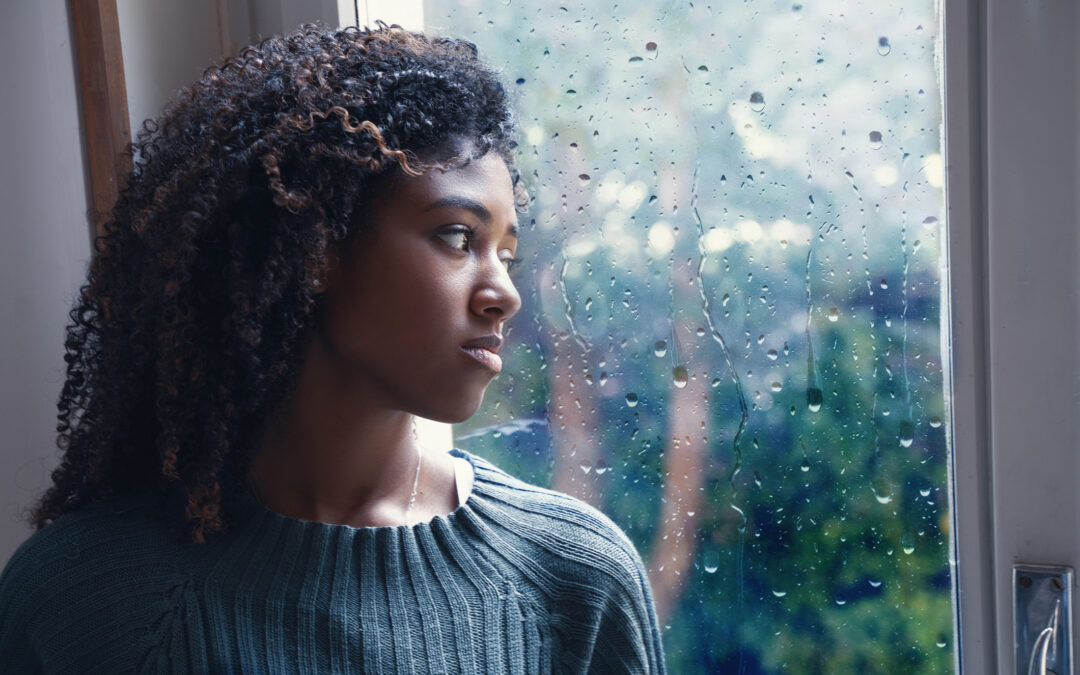What is SAD?
Seasonal Affective Disorder (SAD), often called seasonal depression, is estimated to affect roughly 5% of the population at any given time. Although it can occur with any seasonal change, the predominant timeframe is depressive symptoms starting with a fall to winter onset, and a spring to summer remission.
For areas of the country that experience harsh fall and winter weather, SAD can be especially prominent or severe. For example, research shows that the estimated prevalence in Florida is only 1%, but that number rises to 9% in Alaska. With the Portland-Vancouver metro area receiving an average of 140-160 days of rain a year and especially limited sunlight in the late fall and winter, it’s no wonder we experience some of the highest rates of depression (and seasonally related depression) in the country. Many people who live in the Pacific Northwest find comfort and peace in the gloomy, rainy days, but for others, the seasonal change can bring dread for the impending shift in mood and overall happiness.
If you notice you struggle significantly during the fall to winter months, you are not alone. Some people struggle with a less severe version of the same symptom profile, often called the “winter blues”. If these symptoms start to become intense enough to impact your daily life, it’s worth checking in with a mental health professional and/or primary care provider to help you find the right support.
What does SAD look like?
Symptoms of seasonal affective disorder can look very similar to other forms of depression, but they markedly follow a seasonal pattern. AFAB (assigned female at birth) people appear to be affected at a great rate, though the reason for this difference is unknown. The average age of onset of symptoms is around 20 years old, but it can affect people of all ages. Some symptoms to look out for as we move into fall and winter include:
- General feelings of sadness
- Fatigue despite increased sleep
- Loss of interest in previously enjoyed activities
- Difficulty concentrating
- Carbohydrate cravings and increased appetite
- Irritability
- Changes in libido
- Feelings of hopelessness
What causes SAD?
While it is unknown what specifically causes SAD, research shows that sunshine certainly plays a factor, and circadian rhythm, hormonal factors, serotonin levels, genetic factors, and preexisting depression symptoms may all play a role. Some theories speculate that reduced sunlight exposure causes the body to produce and release more melatonin, a naturally occurring hormone that induces sleepiness and helps regulate circadian rhythms.
We may not know the exact biological mechanisms or reasoning for seasonal affective disorder, but because so many people experience similar symptoms, we do have some options can be done to reduce their severity.
What helps?
- Light therapy and more time outside
Because we know that SAD is at least partially due to reduced sunlight exposure and changing daylight patterns, it stands to reason that increased sunlight can help manage symptoms. In places where natural sunlight is difficult to come by during the fall-winter months, devices called lightboxes can be a great option to try. Check out this guide to picking an appropriate light therapy box.
- Therapy
Support from a mental health professional is important any time you’re experiencing depressive symptoms that are interfering with your daily activities or quality of life. A variety of therapy modalities can be effective in managing seasonal depression, but cognitive-behavioral therapy has specifically been shown to reduce symptoms. There is strong evidence that the impact of CBT is even greater than that of light therapy and has the power to provide protective benefits in seasonal changes even in future years after initial treatment.
- Medical Assessment
If you notice symptoms of SAD, it’s important to see a medical provider to rule out other causes (things like anemia, vitamin deficiencies, thyroid issues and other health conditions can present in symptoms that look like depression). If they conclude that SAD is the presenting concern, they may be able to suggest lifestyle or medication changes to support you through this time. They may also refer you to a mental health prescriber (like a psychiatrist or psychiatric nurse practitioner). In some cases, psychotropic medication can be a helpful supplement, and a prescriber with a specialty in this area can help you weigh your options.
If you or someone you care about seems to be experiencing depressive symptoms, (seasonally or otherwise) don’t delay in reaching out for help. There are treatment options available, and people ready to help you get back to feeling well – even during rainy season!

How to Ruminate Purposefully
Do your thoughts ever end up stuck in the past, replaying a conversation or event in your head? Susan Nolen-Hoeksema from Yale University describes ruminating as “a mode of responding to distress that involves repetitively and passively focusing on symptoms of...

THOUGHT DEFUSION: An Alternative Approach to Handling Intrusive Negative Thoughts
Automatic negative thoughts are a natural part of the human experience. For the most part, we don’t conjure them up or think them on purpose. They happen instinctively. Negative thoughts get directed toward ourselves (“I can’t believe I’m running late again today!...

Quotes to Inspire Self-Acceptance
“You either walk inside your story and own it or you stand outside your story and hustle for your worthiness.” “The hardest challenge is to be yourself in a world where everyone is trying to make you be somebody else.” “The most beautiful people we have known...

Walk to Fight Suicide
Star Meadow Counseling is proud to help sponsor the 2017 Out of Darkness Community Walk. We have seen the impact that suicide can have on friends and family and are committed to spreading a message of hope to those that are suffering. Every 40 seconds someone in the...

Listen Like a Counselor – How to Help Your Depressed Teen
Teen depression can bring an array of emotions and behaviors that parents struggle to understand. An urge to isolate, to experience intense feelings alone Difficulty maintaining motivation with chores or homework Disinterest in usual hobbies or interests An opposite...

